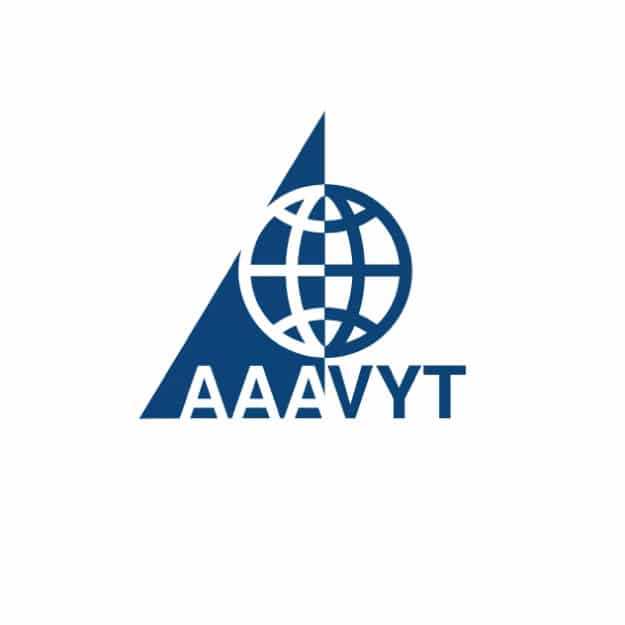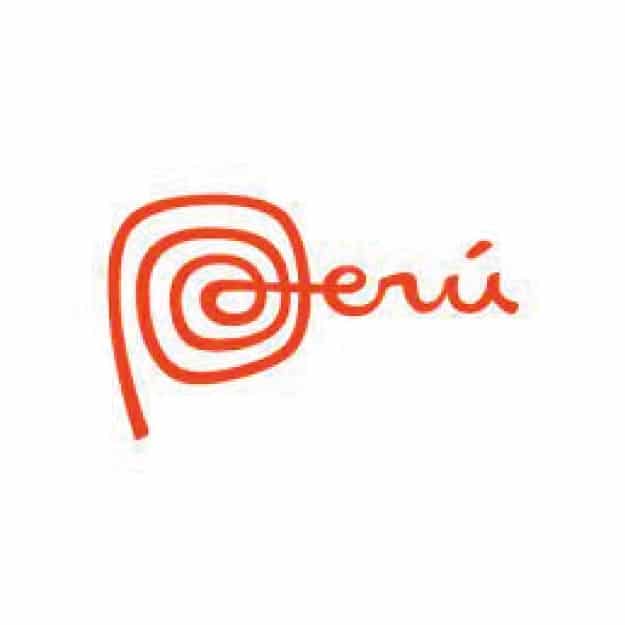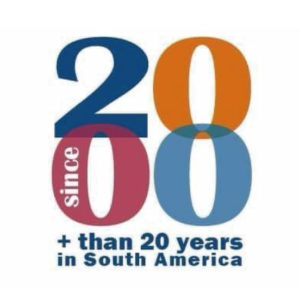What to see in the Sacred Valley?
The traditional access point to the Sacred Valley is Cusco, so you need to get there first. Luckily, Cusco is well-connected with all major cities in Peru. Buses run to Cusco regularly from Lima, but it’s actually better to fly in from Lima to save time. From Cusco, you can either take an organized tour to Sacred Valley or public transport.
The only downside of taking public transport is that every destination in Sacred Valley has a different bus station. So you always have to figure out which bus station is the right one. Also, when pressed for time, it is better to take a tour and see more places in one day as visiting all sites separately would take you much longer.
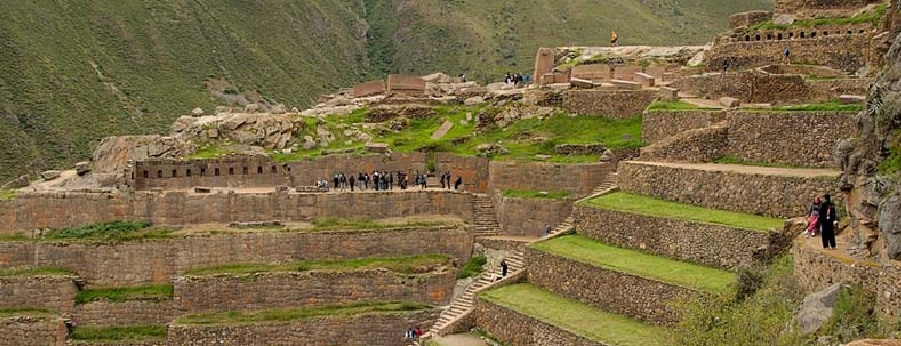
Ollantaytambo
There is a big chance you will visit Ollantaytambo more than once during your stay in Cusco because most travelers take a train to Aguas Calientes from here, a town that serves as a base for visiting Machu Picchu. But there is another reason why to visit Ollantaytambo separately: the Ollantaytambo Ruins.
A former Inca administrative center and a control point for the entrance to the Amazon corner of the Inca Empire lie approximately two hours’ drive from Cusco. For that reason, it is better to combine this site with other attractions on the way. Ollantaytambo Ruins is a vast site characterized by an extensive set of agricultural terraces which are higher and broader than usual Inca’s terraces. Another distinguishing element are the old storehouses, you can see from the ruins when looking on the other side of the valley; and also the Temple of the Sun standing on the top.
The most impressive feeling is when you stand on the top of the ruins, look on the other side of the valley, and when you realize that all large stones come from the quarry on the other side of the valley, approximately 5 kilometers away. But the most jaw-dropping moment comes when you understand that Inca people did not use animals or wheel to move stones from one place to another and created everything by human labor and power.
Pisac
One of our favorite archaeological gems of Sacred Valley was Pisac Ruins. The Inca ruins lie atop a hill above Pisac Town – the central part is located on the very top, but other former buildings or sometimes rather piles of stones are scattered over the grassy land. Because of the atop position, the primary purpose of Pisac Ruins was to protect Cusco from possible attacks.
There are two ways how to visit Pisac Ruins, by car or hiking. If you have a half-day and you are reasonably fit, we strongly recommend you the latter option as it is very scenic. But you need to get to Pisac first. There is a road leading directly to the archaeological site’s entrance, so you can either take a tour from Cusco (tours usually combine several sites including Pisac and cost around $25 when booked in Cusco), take a taxi from Cusco, or arrive by minivan to Pisac town and here take a cab to the gate.
Because parts of ruins are all around the path leading to Pisac, you won’t be by no means able to see everything, only the most crowded section of ruins. Instead of traveling by car, we decided to hike from Pisac town to Pisac Ruins. The whole trail leads uphill, so it is a good way how to prepare yourself for other treks high in the Andes. The distance from town to the highest point of ruins is 4 km, and it should take you about two hours one way. Of course, you can arrive at the entrance by car and walk only downhill. By hiking this trail, you will enjoy beautiful views, an almost abandoned trek, and more ruins. Pisac town is famous for traditional markets, so if shopping is your thing, you shouldn’t forget to make a stop here.
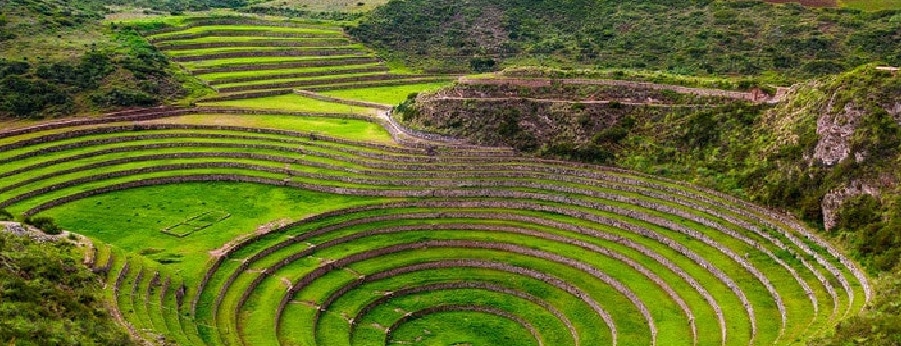
Maras & Moray
The Inca ruins of Moray are one of the most interesting and beautiful ruins in Peru. Designed like a dug-out amphitheater, scientists are still baffled as to what the site was actually used for.
The latest theory is that the Inca people were using it as a sort of test laboratory for crops. Located near the ruins of Moray is the town of Maras. The town is famous for its local salt-evaporation ponds that have been in use since the Inca period. The salt deposited here would have been shipped out across the entire Inca nation.
Chinchero
Chinchero is located on a deserted plateau overlooking the snowy peaks of the Andes (such as the Salkantay!). This charming village is home to textile houses that offer tours to learn more about the weaving technics used by local families to create colourful textiles. These traditional handwoven patterns represent tales and legends that have been transmitted from mothers to daughters for generations and are usually created from memory. The yarn is prepared from alpaca wool and naturally dyed with local products.
However, with the increasing amount of tourism in the region, chances are you will only find weaving houses dying with artificial colours and selling lesser detailed products. Nevertheless, I totally recommend visiting one of these small textile houses to learn about the process and listen to the weavers’ stories. Most are free, but the owners would hope for a purchase or even a tip, so be aware and conscious of this!
Chinchero is also quite known for its market but just like Pisac, you might find it a bit touristy or lacking authenticity. Although, don’t get upset because another reason to visit Chinchero is for its Incan ruins. Only 10 min walk from the main square, you will find Incan agricultural terraces (near the market and Iglesia de Nuestra Señora de la Natividad). Some are still in use by local farmers.
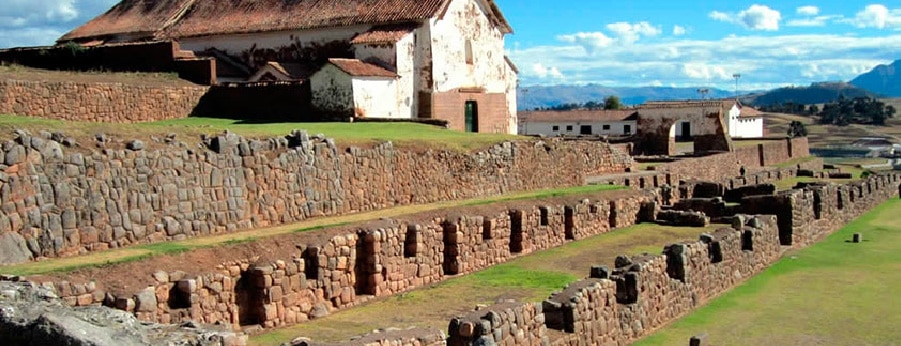
The Inca Citadel of Machu Picchu
With more than 2.500 visitors per day, the Incan citadel is the main touristic attraction in Peru. For those lucky enough to visit Machu Picchu, the intention is to leave with a beautiful shot of the Inca’s glorious city from the main viewpoints. Yet, Machu Picchu is not just about its photogenic sceneries. Visiting the city of gold, which was never found by the Spanish colonists, is also about the journey required to get there. Even if for the past decade, the infrastructure to reach the valley has considerably improved and became globally accessible, Machu Picchu remains remote, and despite the thousands of daily tourists visiting the ruins, it has managed to keep its secrets.
It’s no surprise that instead of hopping off of the plane and rushing to Machu Picchu, a large proportion of the visitors decide to build up the excitement by hiking through tropical forests and highlands for a week prior reaching Machu Picchu. Whether you choose the Inca Trail or one of its alternatives, such as the Salkantay Trek, hiking to Machu Picchu is like a pilgrimage, with the entrance to the citadel being the reward
Sacsayhuaman
It is a favorite trip for people staying in the city only for a day or two as it is easily reachable either by public transport (take a colectivo going to Cristo Blanco or a minivan to Pisac and ask to be dropped off at Sacsayhuaman) or walk approximately a half an hour uphill from the city center. Sacsayhuaman was a fortress, and even Spaniards who arrived in Cusco in the 16th century admired Incan precise work with the stone. Until today, some of the stones are so closely spaced together that not a single piece of paper fit between them.
There are another three ruins within 8 kilometers from Cusco and although Sacsayhuaman is the most impressive you can take a bus to Pisac and ask a driver to drop you off at the furthest ruin from Cusco – Tambomachay and from here walk back to the city via Qenqo, Pukapukara, and Sacsayhuaman. As most places near Cusco lie in the altitude – the city itself is located almost 3400 meters above sea level, visiting ruins nearby are perfect for proper acclimatization.






